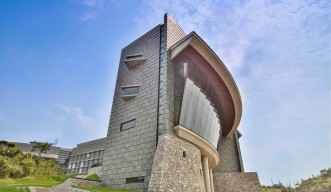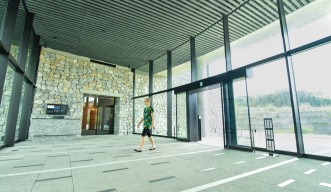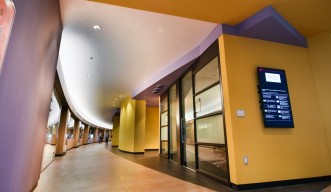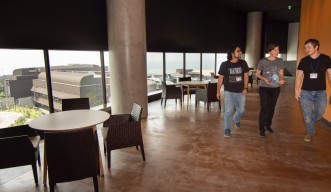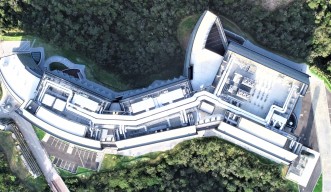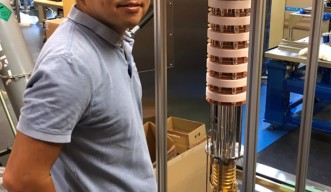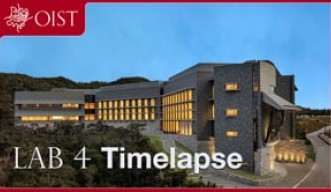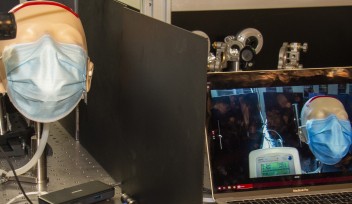State-of-the-art building opens its doors
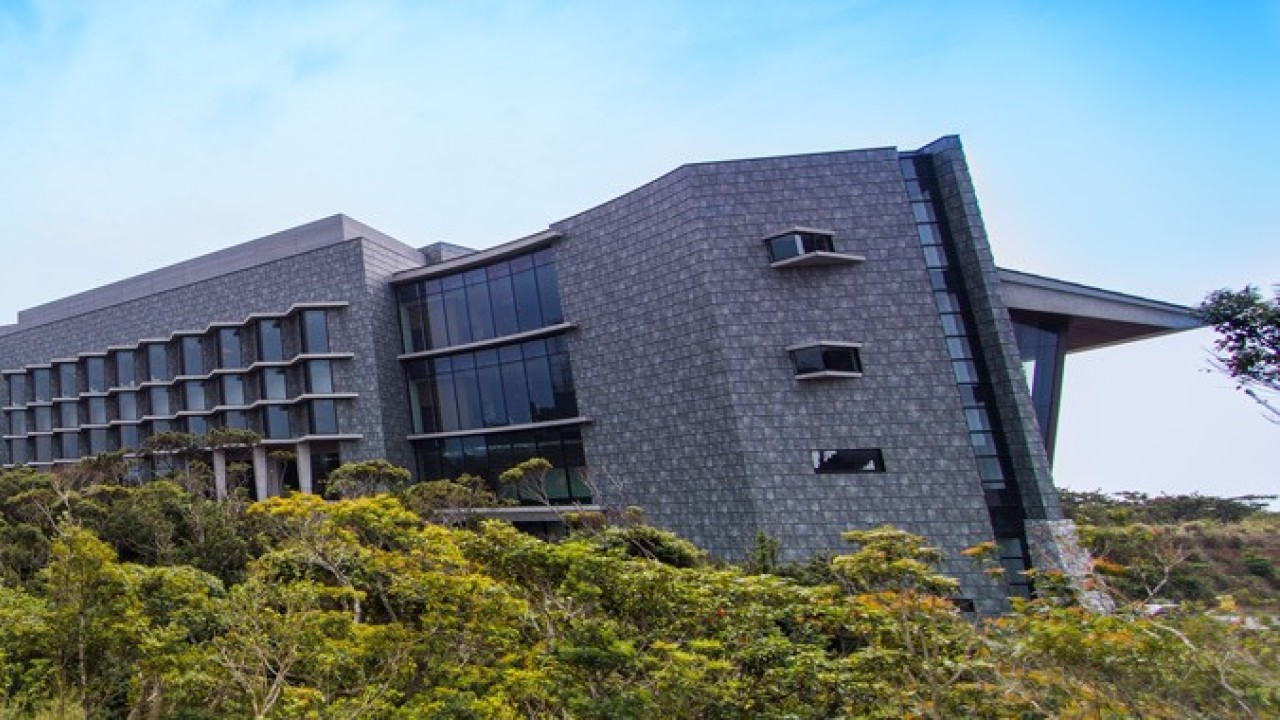
Okinawa Institute of Science and Technology (OIST) President and Chief Executive Officer, Dr Peter Gruss, has welcomed scientific research teams to the Institution’s brand-new laboratory – Lab 4 – providing almost 20,000m2 of floor area dedicated to world-leading discovery. Lab 4 is OIST’s most substantial capital project to date, and completion marks a further milestone in OIST’s ten year strategic plan to strengthen Japan’s global scientific leadership, and build a community of internationally renowned researchers to compete with the world’s best, and undertake work which sparks breakthrough innovation.
https://hannes.home.oist.jp
(All Rights Reserved)
“The current travel and event restrictions around the world mean postponing our community-wide celebration and formal opening until a later date,” said Dr Gruss, “but now is the time to thank an incredible team of architects, engineers and construction staff for delivering a superb new laboratory building, on time, and within budget. Above all, I would like to express deep appreciation to the Government and people of Japan for providing this cutting-edge resource as an expression of their continuing confidence in our mission. The model we are growing at OIST shows that the world’s top talents will indeed be drawn to Japan to pursue their work if they are provided with a highly international culture, given the time and trust to support fundamental discovery, and if they can access facilities and apparatus commensurate with the very best in the world.”
OIST Provost Professor Mary Collins said: “This new facility will enable the work of international teams drawn to Okinawa from a breadth of areas within the sciences. Acknowledged experts in physics, mathematics, chemistry and life sciences will be housed together in Lab 4, united by the striking diversity of their units and by the global challenges they will address together.”
The building can accommodate 24 research units and also brings together OIST’s senior leadership team in one location, ensuring close coordination and enhancing liaison between faculty and the administration.


Professor Yoshinori Okada, who runs the Quantum Materials Science Unit, has been setting up his equipment in Lab 4 for the last two months and he’s excited to have it all installed. It includes a microscope in a sound-proof room, and specifically designed clustered equipment for searching for novel quantum materials at the atomic level.
“When I arrived at OIST, a little more than two years ago, I was placed temporarily in Lab 1,” said Professor Okada. “I’ve been waiting for Lab 4 to open so that I can have the space to pursue my planned research. Over the last couple of years, I’ve had the great opportunity to develop my clustered equipment piece by piece. And now, in Lab 4, I can bring it all together with a much better design than two years ago.”
Professor Okada’s research sits at the intersection of physics and chemistry. Using this newly built equipment, his unit will be constructing materials at the atomic scale. “We’ll use this equipment to make atomic materials layer-by-layer, materials that are beyond naturally occurring crystals. Then, with an electron spectroscopy, we can see how the electrons within the materials react.”
“My members will use this equipment, once they’ve had training, so it will be a great research opportunity for them. And being situated so close to other physics and chemistry units will really encourage collaboration and interdisciplinary research.”
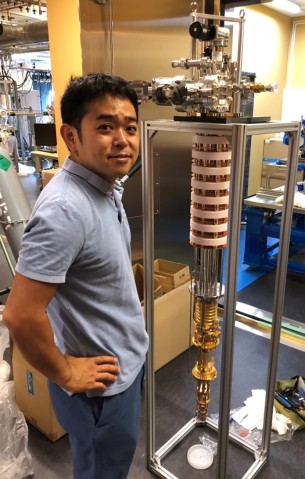
Alongside the research labs, parts of the new building have been allocated to administration and other service facilities, including the Ganjuu Wellbeing Service, a larger Resource Center and a second restaurant.
Mr. Ali Ganjehlou, Vice President of Buildings & Facilities Management Division at OIST, oversaw Lab 4’s design and construction.
“The discussions about the building’s design began in 2015 with the president at the time, the deans and faculty members. Since then, the president has changed, deans have been replaced and new faculty members have joined OIST, all of whom had different opinions. As such, we have constantly reviewed the design to accommodate the needs of different research, and this might even continue during operation as new members move into the building.”
One of the greatest challenges during the design phase was not knowing how many units of each category would move into Lab 4. “We designed the lab based on the same interdisciplinary guidelines that have been the core of OIST’s policies since its establishment. This meant that we constantly had to update the layout of the building to make sure it would encourage interdisciplinary research.”
Mr. Ganjehlou emphasized that protecting the environment around Lab 4 was “more than a top priority for everyone. OIST has committed itself to preserving the natural environment that the campus is within. This was considered at every stage of the development.”
With OIST’s expansion plans involving 100 units after the completion of Lab 5, Lab 4 has far surpassed what was necessary to reach this. “The final capacity of Lab 4 means that we will be able to accommodate more than 80 research units when the building is fully occupied, which goes above and beyond what we originally planned,” said Mr. Ganjehlou.

Although several important services, such as the Ganjuu Wellbeing Service, the Resource Center and some of the research units, moved into Lab 4 earlier this year, the building became fully operational on April 1, 2020.
For Professor Okada, the two-year wait is coming to an end and soon he’ll get to see what his equipment can do, “It’s very exciting, but also nerve-wracking,” he acknowledged.
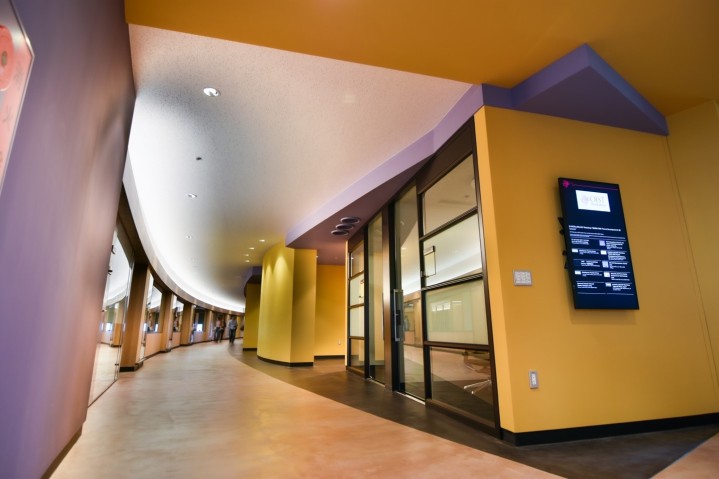

Specialties
Research Unit
For press enquiries:
Press Inquiry Form










